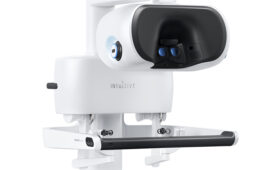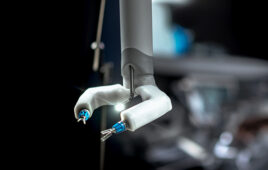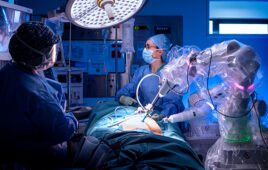As more dynamic automation systems take a larger role in the development of medical products, engineers need to learn how to design for repeatability and reliability.
Brian Ballweg and Bill Stube, Plexus

(Image from Plexus)
Whether bringing a medical product to life or making sure processes in the lab run smoothly, the use of dynamic automation systems continues to increase. In a field like medical device and equipment design, it’s imperative that all systems function flawlessly.
It can often take years to gain the expertise to navigate difficult automation challenges. The goal, however, remains the same: automation that ensures both repeatability and reliability.
Repeatability is the ability to perform a task the same way every time. For instance, the introduction of robots makes repeating the same motion consistently a reality. Reliability is determined by how well an action or motion can be performed throughout the life cycle of a system.
A concrete example of this can be seen in a robot that is grabbing microscope slides to scan for cancerous cells. That robot must be able to repeat the exact motion, within the expected variation of slides, the operator placement of slides, in varying environmental conditions and system accuracy, every time. It must always make the same motion, with the same amount of pressure, without error or slide damage for the life cycle of the product.
Designing and building an automation system with reliability and repeatability at its center comes down to four steps.
Define the use cases
The first step in developing an automation system is identifying the stakeholders, determining their hierarchy and understanding their interdependencies. The goal, then, becomes understanding the context in which the product will be used.
Questions to ask during this stage may include:
- What are the user’s needs and product constraints?
- What components are necessary to make the product run smoothly through the process?
- In what ways are the device users interacting with the system?
- Who is purchasing the solution?
Once this analysis is done, it becomes important to synthesize that information to meet the needs of multiple stakeholder groups in a way that allows the system to function best.
Make it work
Determining early concept feasibility is, essentially, understanding how to make the automation system function the way that it should. In most automation systems, this can be characterized as creating equivalency to human motion while optimizing system variance, aligning to key business considerations and evaluating and reducing key technical and business risks. For the robot picking up slides, determining early concept feasibility could include understanding the ranges of motion and care in handling that will be necessary for the machine to function like a lab technician.
Engineers who determine early concept feasibility will build on the information that was gained when the use cases were defined and understand how to proceed with creating the system.
Simulation and prototyping
Simulation and prototyping of an automation system are about understanding how the system will actually function before final commercialization and manufacture. This step is driven by observing the system in use and evaluating its function. Some companies will choose to use simulation software to complete this step; others will gather the materials and build a working prototype.
Instead of choosing one method or the other, the strategic route is to view simulation and prototyping as collaborative steps. First, employ simulation software to gather data quickly, then follow up the simulation with a working prototype to prove feasibility and confirm the data from the simulation.
Execute for precision
Once an automation solution is in place, dedicate the time to research and correct every issue that arises. For a robot picking slides, executing for precision could include continually optimizing the motion flow of the arm. For instance, if something gets stuck, physically manipulating it to get it back on track is only a quick fix. Every fault, big or small, must be noted. To keep a system repeatable and reliable through its lifecycle, each fault must be investigated for the root cause and solved before the system is ready to function in the market.
The types of problems that will involve automation vary from company to company. Some automated systems need to carry objects hundreds of feet and some need to move nanometers. While both ends of this motion spectrum and everything in between have their own complications, they all depend on repeatability and reliability. By making these two tenets the pillars of an automated medical device system, companies will put themselves in the best position to succeed.
Brian Ballweg is a senior principal Engineer at Plexus with 26 years of experience in mechatronic product development and commercialization at Plexus in healthcare/life sciences, communications, industrial, commercial, and aerospace/defense.
Bill Stube is director of engineering operations for life sciences at Plexus, with 15 years of experience in engineering, system architecture, and project management of complex product development projects from initial concept and architecture through production manufacture.
The opinions expressed in this blog post are the authors’ only and do not necessarily reflect those of Medical Design and Outsourcing or its employees.




